Brake discs, also known as brake rotors, are an essential component of a vehicle’s braking system.
They are responsible for converting the moving vehicle’s kinetic energy into thermal energy through friction, which stops the vehicle.
When a driver applies the brakes, the brake pads clamp down on the brake discs, causing them to slow down and eventually stop.
However, brake discs can sometimes become rusted, affecting their ability to function properly.
Various factors, including exposure to water and salt, poor maintenance, and the accumulation of brake dust, can cause rust on brake discs.
This article will discuss the causes of brake disc rust and provide tips for fixing and preventing this issue.
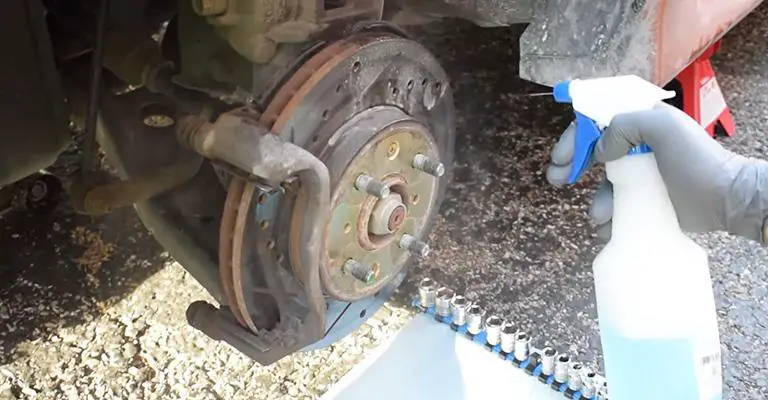
Contents
- 0.1 Is Rust On The Brake Discs Harmful?
- 0.2 Why Does Rust Form On The Brake Discs?
- 0.3 Are All Brake Discs Prone To Rust, Then?
- 0.4 Why Do My Rotors Rust?
- 0.5 What Should I Do To Remove The Surface Rust On The Brake Disc?
- 0.6 How Does Rust Affect My Brakes?
- 0.7 What Removes Brake Dust?
- 0.8 Can I Paint My Brake Discs To Prevent Rusting?
- 0.9 Can I Skim My Brakes To Remove The Rust?
- 0.10 When Does Rust On The Brake Discs Become A Serious Problem?
- 0.11 How Can I Prevent My Brake Discs From Rusting?
- 0.12 How To Prevent Brake Dust Build-Up On Wheels?
- 0.13 Notes On Brake Disc Rust
- 0.14 Do Rusty Brake Rotors Need To Be Replaced?
- 1 Final Words
Is Rust On The Brake Discs Harmful?
A car parked for a while will start to develop rust on the brake discs/rotors after a while. We all have different ways of looking at things. Some of us can look past it, while others can’t stand it.
There are three ways that brake discs become worn over time: thinning, warping, and rusting. You may be wondering if rust on brake discs is harmful, but only if it remains unattended for way too long. The braking surface of the discs can be damaged by corrosion caused by rust.
Note that the slight rust on the discs is often just surface rust. In contrast to the name, the rust has only occurred on the disc’s surface, not on its inside. It is safe to ignore the rust at this point.
Why Does Rust Form On The Brake Discs?
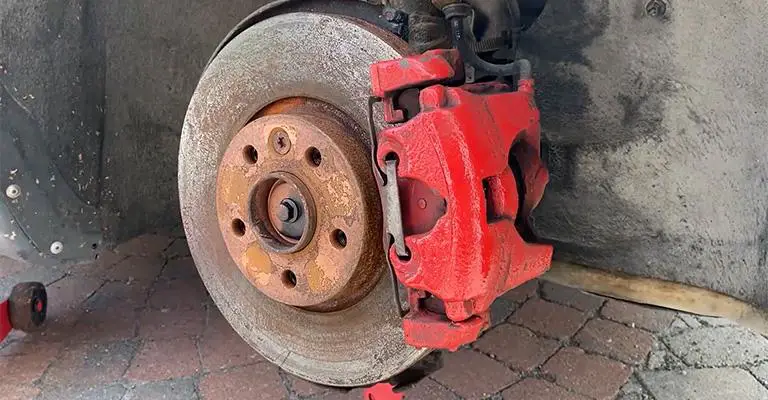
In most cases, brake discs are made of cast iron. We know that ferrous metals rust when they come into contact with water. Climates with high humidity cause rust to form more rapidly.
The exhaust manifold and a few suspension joints are other parts exposed to ferrous metal besides brake discs.
Are All Brake Discs Prone To Rust, Then?
Most cars use cast iron for brake discs since it has high thermal conductivity and is affordable. Rust will be a problem for brake discs as long as they are made of cast iron.
Modern brake discs come with advanced technology like ceramic or tungsten-coated brake discs. While these alternative materials are resistant to rust, they are not the most economical choice.
Why Do My Rotors Rust?
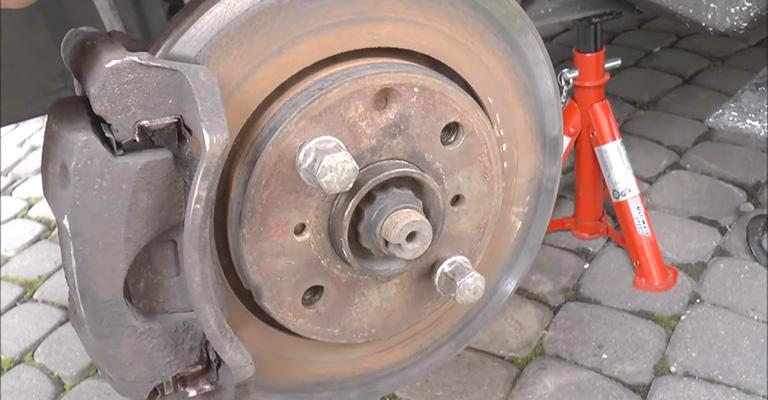
A lot of this has to do with the rotor’s material. As long as your car does not have carbon-ceramic brakes, your rotors will likely be cast iron, which rusts easily. If exposed to moisture or water, iron oxidizes, and rust forms on the discs.
Regardless of ride height, most cars on the road experience rotor rust regardless of SUV or sedan design. The same phenomenon occurs in crossovers as well. Because most cars use cast-iron discs, it is just a matter of when it will rain.
What Should I Do To Remove The Surface Rust On The Brake Disc?
As a result of the material brake discs are made of – often cast iron – and their location, they tend to rust quite easily. The good news is that there’s not much you can do to stop this rust from building up.
Keeping your car on the road will help you eliminate rust on your brake discs. With repeated braking and driving, rust will be scraped from the discs, revealing the shiny metal.
It is enough to drive the car usually. The surface rust will disappear when the brakes are applied normally. A thin layer of surface rust does not require the removal of the wheel or scrubbing the disc down.
How Does Rust Affect My Brakes?
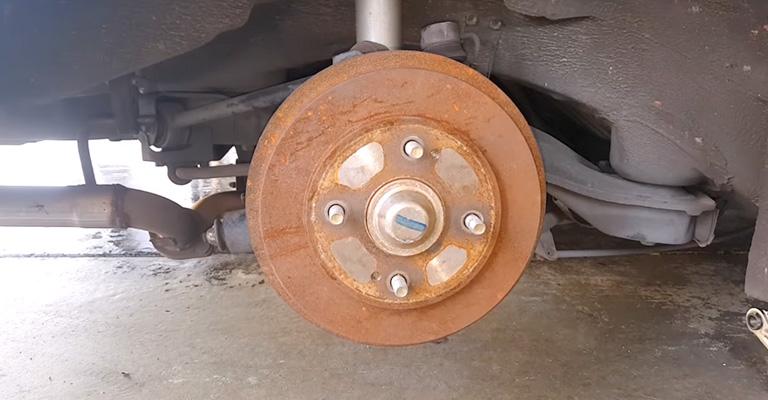
When your brake pads and rotors are rusted or corrosion, they can suffer detrimental effects. It is important to understand how corrosion will affect your brakes based on where it occurs.
Surface rust is typically not a problem when you apply your brakes frequently because your brake pads clean it off.
The rust, however, can accumulate if you don’t drive your vehicle regularly, which can compromise the brakes’ structural integrity. In addition to causing noise issues, it can also negatively affect performance.
Corrosion can occur on the backing plate of the brake pads, which can lead to delamination of the friction material and increased noise, vibration, and harshness (NVH).
If corrosion progresses, the friction material can completely separate from the pad’s backing plate. Unless this corrosion has been removed, it is impossible to repair brake pads.
The rotor surface can wear away if not driven for an extended period. A prolonged break in driving can lead to pits in the rotor.
You may notice that the surface of your rotors is no longer smooth, which can negatively impact the performance of your braking system. Mechanics advise replacing the rotor if severe damage is present.
What Removes Brake Dust?
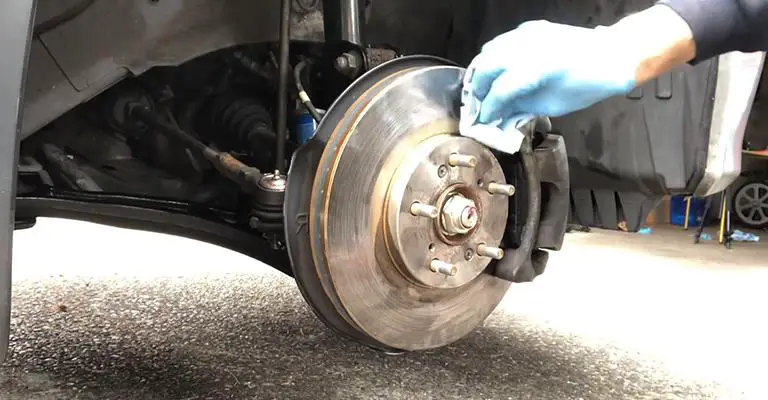
There is no doubt that brake dust can damage your car’s wheels and paintwork. Besides being very abrasive, it is also very corrosive. Metal particles are deposited every time you brake when your brake pads rub against your discs.
These depositors can accumulate over time, creating fine dust that can damage the paint on your car’s wheels. Thus, removing this dust is necessary, but how can you accomplish this without scratching your car’s paintwork?
You can easily clean your wheels with warm water and washing-up liquid. First, spray off the most stubborn dirt and dust with a hose to prevent further scratches.
Once this has been done, clean the wheels with a wheel brush and soapy water. Ensure that you get into all of the nooks and crannies. It may be possible to use an old toothbrush to get into tiny corners.
When you’re satisfied that most of the dirt is removed, spray down the wheel again and wipe it with a terry cloth.
Can I Paint My Brake Discs To Prevent Rusting?
The disc hub can be painted, but that is the extent of it. Painting the braking surface is not recommended. That’s not something you should do. You should also refrain from applying oil to it. The braking surface will be compromised as a result, and it will be useless.
Can I Skim My Brakes To Remove The Rust?
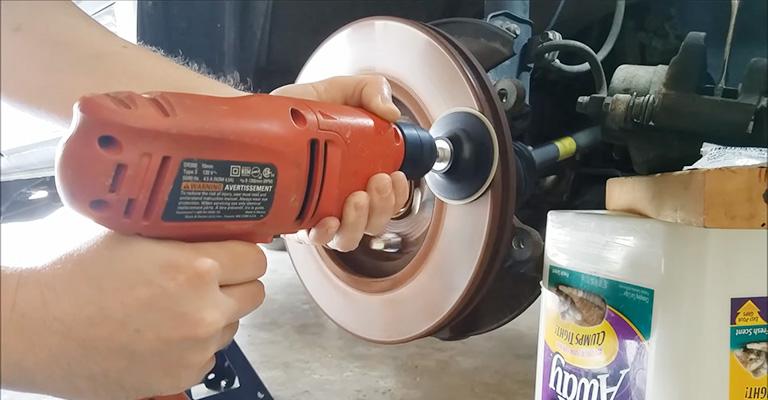
As long as your brake discs have enough thickness to be skimmed, it may be possible. Brake discs have a minimum thickness and tend to last about 4mm, depending on the model and make.
After skimming fails to save the disc (i.e., it’s too thin), a new set of brake discs should be purchased.
When Does Rust On The Brake Discs Become A Serious Problem?
It is determined by the weather and how well the car is maintained whether rust will form on it. In consequence, rust cannot be considered severe for any particular period.
It is important to look out for “pitting” caused by rust. Pitting means the rust has corroded the brake disc surface, eliminating its ability to be removed by gentle braking. You should probably change the discs when you see these signs.
The rust spreads like cancer and continues to corrode the disc, impairing its structural integrity. Moreover, the brakes will feel judder due to the irregular surface caused by pitting.
How Can I Prevent My Brake Discs From Rusting?
Rust forms on brake discs when they are parked. This is not the case when it is being driven. Parking the car in a dry, shaded area can prevent brake disc rust. You should also avoid letting your car sit for too long. It is not a good idea to park cars in the parking lot.
How To Prevent Brake Dust Build-Up On Wheels?
Brake dust will always occur if your brakes work as designed. You might get some relief from your brake dust by using a brake dust shield.
By attaching it to the inside of your wheel, you can use this device to keep dust from settling on your steering wheel. These devices come in packs of two and can easily be installed on your own.
Notes On Brake Disc Rust
As much as we may try to avoid it, brake pads are harmed by rust.
Due to the friction between the brake pads and the discs, minor damage is caused by the rust.
It won’t hurt the brake pads immediately, but rust will damage them and wear them down in the long run.
The damaged brake pad can corrode the disk if not treated, presenting the same risk to your car, as previously mentioned.
In addition to worn brake pads, worn brake discs can significantly impact the vehicle’s ability to slow down quickly.
A loud grinding noise will come from the wheel. It affects when this combination is in play.
A car’s discs may be useless if left covered in rust for too long, thus posing a serious safety risk.
It is not advisable to drive the car at this stage, but instead to have it inspected and, if necessary, have the brakes repaired or replaced by your local garage.
Do Rusty Brake Rotors Need To Be Replaced?
Despite their durability, brake rotors do not last forever. Brake rotors will wear down incrementally each time you use them.
You can influence how fast rotors wear by several factors, such as the quality of the rotor, the type of brake pads you use, how fast they cool down, and your driving style.
It also depends on how much moisture and road salt your rotors are exposed to – elements that can lead to excessive corrosion and rust.
Rotor replacement or resurfacing is recommended every time new pads are changed to ensure proper bedtime and promote a fresh friction layer.
Rotor replacement is recommended if your rotors are rusted and show signs of wear.
Final Words
Surface rust usually develops on your car after it has been parked for a long time. The problem should disappear with a little driving.
Watch out for pitting and corrosion on your brake discs and rotors when they begin to pit. If you want to skim a brake disc, remember that it must be at least the required thickness for the brake to function properly.
